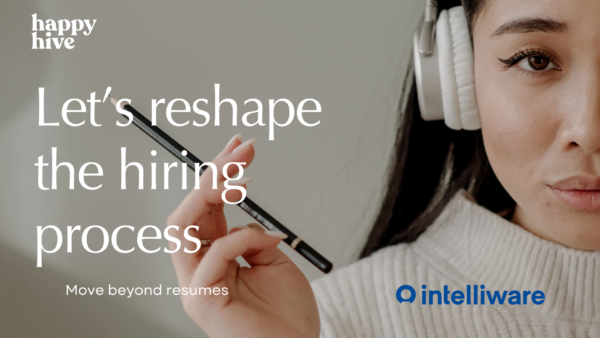Automation without accountability is a risk you do not want on your watch. The pressure to cut cycle times and costs is real, but AI that acts without oversight can create new liabilities just as quickly. Human-in-the-loop models give your teams the steering wheel, so automation accelerates without compromising safety or trust. That balance is how technology actually moves the needle for your organisation.
Teams feel the daily tension between speed and control. A queue of edge cases needs judgement, auditors want traceability, and users expect consistent outcomes. Human participation inside AI workflows solves for these frictions by pairing model scale with expert review. The result is a system that learns from people, improves with use, and holds up under scrutiny.
Why Human In The Loop Systems Matter In Enterprise AI

Human participation turns opaque automation into a controllable system with clear roles, guardrails, and feedback paths. You get the scale of models with the contextual judgement of experienced people. That mix reduces errors that cost money, trust, and time to repair. It also shortens the path from pilot to production because leaders can accept measured risk when oversight is built in.
Human reviewers also fuel continuous improvement. Their actions create labelled examples that point models toward better behaviour in the next release. That means fewer escalations over time and more stable outcomes in tricky scenarios. You will see higher adoption from frontline teams because the workflow respects their expertise.
What Is Human In The Loop And How It Works In Systems
Human in the loop is a design pattern where people review, correct, or guide model outputs inside a defined workflow. A human in the loop system pairs automation with checkpoints that route tasks to reviewers based on confidence, rules, or impact. The approach suits regulated contexts where consistency, auditability, and bias control matter. It also fits complex operations where small errors can compound into bigger issues.
Human participation should never be an afterthought. Clear entry and exit criteria, decision rights, and feedback capture need to be part of the plan. Tooling must make review easy and fast, not a new bottleneck. The best setups treat human review as a data product that improves future automation.
“Automation without accountability is a risk you do not want on your watch.”

What Is Human In The Loop For Enterprises
Human in the loop means people sit inside the automation flow, not outside as a separate exception process. They may approve, correct, annotate, or override model outputs in real time. This differs from a pure offline review where people only audit after the fact. The design makes people and AI cooperative rather than adversarial.
For leaders asking what is human in the loop, think about a gate that opens or closes based on risk. Low‑risk tasks pass straight through, while medium‑risk tasks get a quick verification. High‑risk tasks move to experts with richer context and tools. Each path records outcomes so models can learn and routing can improve.
Core Roles Across A Human In The Loop System
A reviewer handles single tasks with clear prompts, context, and actions. A lead sets standards, manages queues, and resolves ambiguous cases. A quality owner audits samples, scores performance, and updates rubrics. A product or process owner defines goals and ensures the workflow ties to business metrics.
A well‑run human in the loop system also depends on platform roles. Data engineers maintain pipelines for labels and events. ML engineers ship models that expose uncertainty and rationale. Designers shape review experiences that reduce clicks and confusion. Compliance teams validate controls and sign off on access and retention.
Interaction Patterns Across The Model Lifecycle
Human in the loop machine learning starts long before deployment. Subject‑matter experts define tasks, supply examples, and build rubrics. They label data for training and flag risky classes that need extra care. This upfront clarity reduces drift and surprise later.
Once live, interaction continues across the lifecycle. People validate samples, correct mistakes, and tag tricky cases for model refresh. They also surface new intents and failure modes that logs alone will miss. These inputs guide backlog priorities and model retraining plans.
Controls, Audit Trails, And Feedback Flow
Every action should produce a durable record that ties model inputs, human steps, and final outcomes. That audit trail supports investigations, quality checks, and external reviews. Access must be scoped, and sensitive data should be redacted in the review UI. Retention policies should reflect business needs and risk posture.
Feedback needs structure. Use rubrics with clear definitions, not open text alone. Capture reason codes for overrides so training data reflects the why, not just the what. Close the loop by pushing accepted corrections back into data stores that feed the next release.
Human in the loop systems align automation with human judgement across the whole lifecycle, from task definition to post‑production learning. Clear roles, structured feedback, and traceable controls make the pattern reliable at scale. The approach protects users while reducing toil as models improve. It also creates a repeatable way to ship AI with confidence.
When To Use Human In The Loop Vs Full Automation

The main difference between human in the loop and full automation is the placement of judgement. Full automation lets the model act alone inside hard boundaries, while human participation adds checkpoints for oversight and learning. The choice hinges on risk, complexity, and the clarity of rules. Your best option changes by use case, data quality, and tolerance for errors.
- High Impact, Low Tolerance For Errors: Use human in the loop automation where mistakes carry legal, financial, or safety consequences. Keep humans in the approval path until metrics show consistent performance at target levels.
- Ambiguous Inputs Or Shifting Rules: Keep people involved when inputs vary widely or policies change often. Humans stabilise outcomes while models catch up and policies settle.
- Sparse Or Noisy Training Data: Use human review as a bridge when labelled data is limited or messy. People generate quality labels and corrections that feed the next training cycle.
- Customer Experience Moments: Insert a checkpoint when tone, empathy, or context matters. Human reviewers protect brand trust and spot nuance that models miss.
- Low‑Risk, High‑Volume Tasks: Move toward full automation when tasks are repetitive, outcomes are clear, and error costs are low. Keep sampling and shadow review to catch drift early.
- New Model In Cold Start: Start with heavier oversight, then dial it back as confidence grows. Treat thresholds as adjustable, not permanent settings.
Choosing the right approach is not a one‑time call. Risk shifts as models improve, data quality changes, and processes mature. Keep levers, not switches, so you can adjust oversight levels without re‑platforming. Tie these choices to metrics you review on a regular cadence.
Designing Human In The Loop Workflows For Scale
Scaling starts with the right architecture and clear decision tiers. Human in the loop systems need routing rules, thresholds, and interfaces that keep reviewers focused on high‑value work. Latency targets, queue health, and reviewer productivity all matter just as much as model metrics. The best designs accept that people and AI will share tasks and plan for that from day one.
Technology alone will not fix a poor process. You need a crisp task definition, consistent rubrics, and training that sticks. The review experience must be simple, accessible, and forgiving of honest error. Your audit and privacy controls should be part of the core path, not an add‑on.
“Clear roles, structured feedback, and traceable controls make the pattern reliable at scale.”

Choose The Right Decision Tier
Start by defining the tiers: straight‑through, quick check, and expert review. Each tier gets a target threshold, time budget, and clear exit criteria. Confidence scores, rule evaluations, and business impact feed the routing logic. Sampling should run across all tiers to keep a pulse on quality.
Adjust tiers as you learn. If quick checks are rubber‑stamping, raise the bar for straight‑through. If expert review queues swell, refine rules or add guardrails that reduce noise. Treat the policy as a living system with documented changes and approvals.
Map Data Quality And Label Operations
Data quality makes or breaks human in the loop automation. Standardise schemas, define label taxonomies, and give reviewers examples that show what good looks like. Build validation rules that catch inconsistent labels before they pollute training sets. Track inter‑rater agreement so you can spot confusion early.
Label operations should feel like a first‑class product. Provide hotkeys, prefill suggestions, and lightweight guidance inside the UI. Measure reviewer time per task and error rates, then fix the biggest friction points first. Make it easy to flag unclear prompts so you can improve instructions.
Build Review UX That Reduces Friction
A good review UI reduces cognitive load and clicks. Show the right context, hide distraction, and place actions where hands already are. Offer clear prompts and reason codes so reviewers spend time on judgement, not tool gymnastics. Support accessibility and keyboard‑first workflows.
Design for resilience. Save draft states, handle timeouts gracefully, and recover work without data loss. Give reviewers simple ways to request help on edge cases. Provide performance stats so individuals can see their impact and improve.
Engineer Feedback Loops And Routing
Feedback loops connect human actions to model improvements. Store corrections, labels, and reason codes in structured form with versioning. Tag data by model version, policy state, and reviewer so you can slice outcomes later. Use these stores to retrain models on a regular schedule.
Routing should be explainable. Keep rules readable, and test them like code. Run A/B routes to compare policies without risking production quality. Archive decisions with timestamps so audits can replay context and understand why a task took a given path.
Scalable human in the loop systems rely on clear tiers, strong data practices, thoughtful UX, and engineered feedback. Each piece reduces friction and strengthens trust. Small investments in design pay off in faster cycles and fewer defects. The payoff shows up in stable throughput and fewer surprises.
Key Challenges And Risk Factors To Anticipate
Measuring Success And Iterating Your Human In The Loop System
Success is not just a higher model score. You care about cost, speed, quality, and risk across the full workflow. Measurement must include both model performance and human performance to tell the full story. A clean metric stack turns debates into clear trade‑offs and decisions.
Human in the loop machine learning improves through tight feedback cycles. Labels, overrides, and comments form the raw material for learning. Turn those signals into dashboards and retraining datasets on a set rhythm. Small cycles keep quality high without long rebuilds.
Define Outcome KPIs That Tie To Business Value
Start with the end in mind. Pick outcome metrics your executives already track, such as cost per case, time to resolution, or error rates that carry fines. Then map proxy metrics that relate to AI and human work, such as model confidence distribution or review time per task. Link them so you can see cause and effect.
Create guardrails around these KPIs. Set floors for quality and ceilings for latency and cost. If efficiency rises while quality dips, slow down and adjust thresholds. Publish targets and review them openly so everyone understands trade‑offs.
Track Model And Human Quality In Parallel
Model metrics alone hide key issues. You need human quality metrics such as agreement rates, correction rates, and rubric compliance. Scorecards should show model‑only, human‑only, and combined outcomes. This view tells you where to improve first.
Use sampling to keep checks lightweight. Pull fresh cases from each route and score them against the rubric. Rotate reviewers on audits to reduce blind spots. Feed every audit result back into training plans and policy updates.
Instrument Latency, Cost, And Throughput
A great system runs at the speed your users expect. Measure time inside each step, not just end‑to‑end. Watch queue length, abandonment, and retries. Use these signals to spot bottlenecks early.
Cost matters too. Track spend per unit across compute, storage, and labour. Compare routes so you can push volume toward the most efficient path without harming quality. Share these numbers with finance so scaling plans stay realistic.
Run Controlled Experiments And Close The Loop
Treat improvements as experiments, not assumptions. Use A/B testing for thresholds, prompts, and UI changes. Roll out to a small slice first, watch metrics, then scale up. Keep a changelog that ties releases to metric movements.
Closing the loop means more than retraining. Update rubrics, refresh examples, and retire confusing reason codes. Train reviewers on new guidance and give them feedback on their impact. These habits build a culture of steady improvement that sticks.
Clear KPIs, dual‑track quality metrics, strong instrumentation, and disciplined experiments keep your human in the loop system improving. Each cycle should produce better outcomes at lower effort. The system becomes easier to manage, not harder. Most important, your users feel the gains in speed and trust.
Real Use Cases Of AI Human In The Loop In Regulated Sectors
Leaders need proof that ai human in the loop adds value where stakes are high. The pattern shines when rules are complex, context changes case by case, and outcomes must be explainable. Human checkpoints protect users while supplying data that improves models over time. Teams get fewer reworks and a cleaner audit path without grinding to a halt.
- Financial Crime Alert Triage: Models score alerts and cluster similar patterns, then analysts review high‑risk groups. The flow cuts noise while keeping eyes on cases that matter most.
- Insurance Claims Adjudication: Automation assembles documents and proposes a decision, then adjusters confirm or correct. The loop tightens consistency and speeds payouts without surprises.
- Healthcare Coding And Prior Authorization: Models extract codes and predict approvals, while clinicians verify details. The process reduces denials and preserves clinical judgement.
- Public Services Eligibility: AI screens applications for completeness and rules alignment, then caseworkers review edge cases. Citizens get faster responses with fewer back‑and‑forths.
- Transport Operations Dispatch: Systems recommend routes or schedule changes, then controllers confirm during peaks. Service quality holds steady even when conditions shift.
- Energy Event Analysis: Models detect anomalies on grid signals, then engineers validate and classify incidents. Findings feed reliability reports and future prevention work.
These patterns scale because they respect risk while reducing toil. Teams learn which cases need human attention and which can pass straight through. Audit trails capture who did what, when, and why. Over time, automation grows and reviewer load drops without compromising trust.
How Electric Mind Can Support Your Human In The Loop Journey
Electric Mind helps CTOs design human in the loop systems that fit the realities of your setting. Our teams blueprint decision tiers, define rubrics, and set routing rules that reflect risk and cost. We design review interfaces that reduce clicks, cut confusion, and support accessibility. We also configure event logging, versioning, and privacy controls so audits move quickly and approvals come easier.
We engineer feedback pipelines so labels, overrides, and comments flow back into training with clear ownership. Dashboards show model and human quality side by side, with latency and cost in view, so trade‑offs are clear. We set up safe experiments for thresholds and prompts, then sequence rollouts that protect users while moving faster. The work is grounded in your metrics and your context, which builds trust and keeps momentum. You get an AI programme that scales with confidence and stands up to scrutiny.




.png)
.png)
.png)
